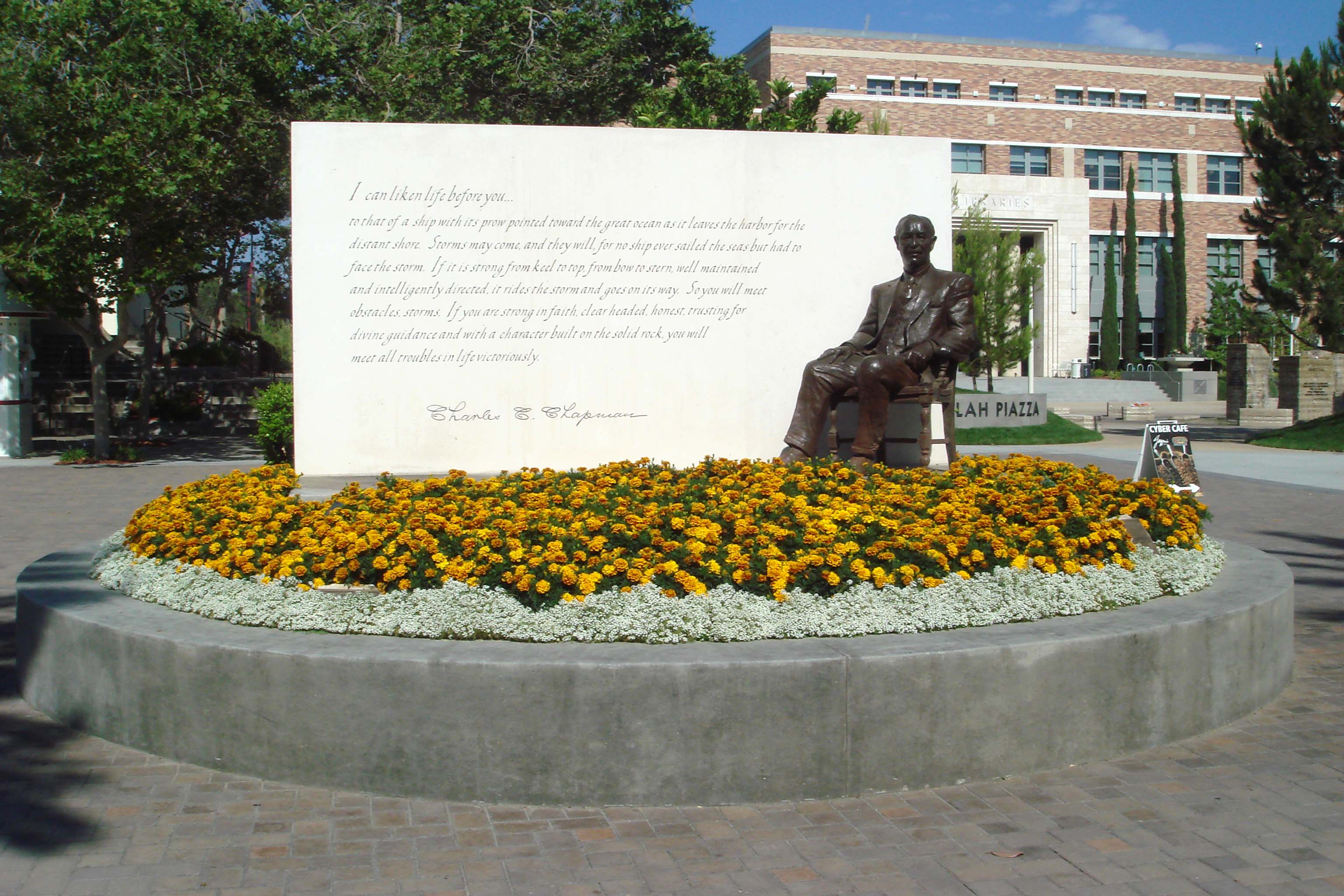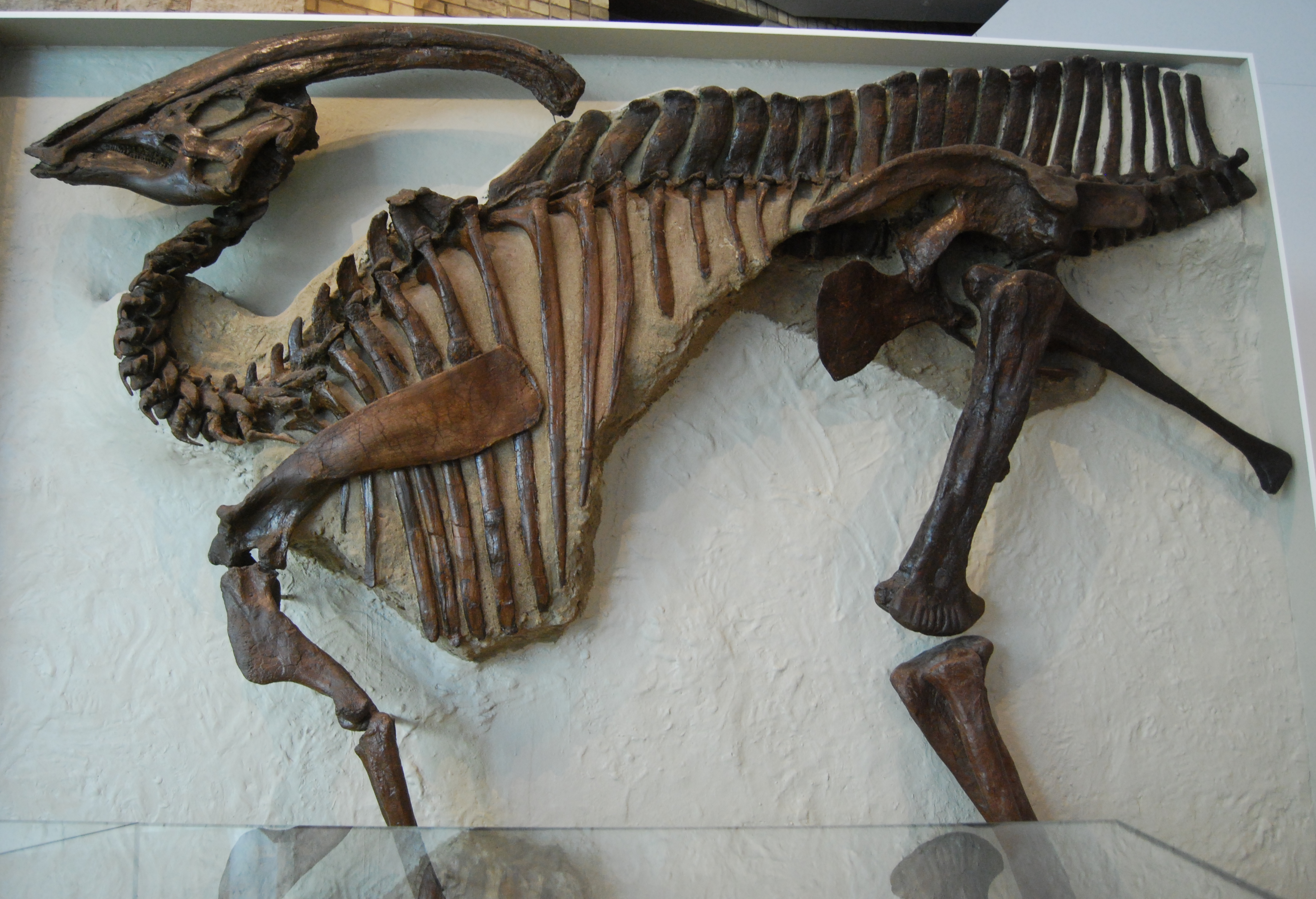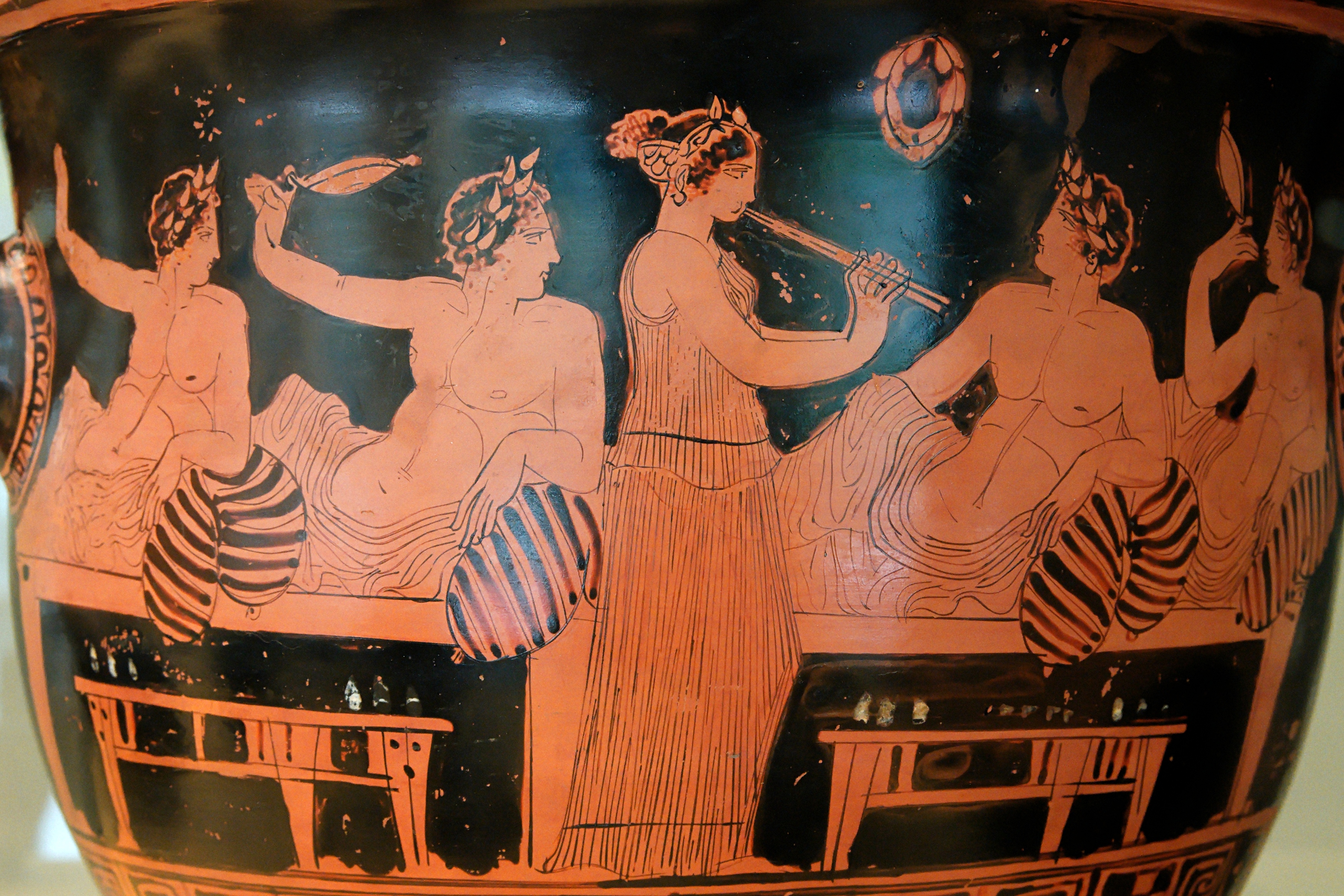|
Dinamation
Dinamation International Corporation was a robotics effects company based in San Juan Capistrano, Santa Ana, and Tustin, California, United States. History It was founded in 1982 by former airline pilot Chris Mays and some neighbors and dropped in March 2001. (A 2001 Wall Street Journal article describes the rise and fall and disappearance of its founder, Chris Mays.) Originally begun as a way to lease handmade, one-of-a-kind, Japanese-produced robot dinosaurs to North American shopping malls, in time Dinamation defied its original mandate and came to produce its own production-line models for exhibit in science museums and zoos worldwide. Dinamation was an example of an American company following, improving upon, and then outpacing its Japanese rivals. Dinamation started out with a dozen movie special effects technicians, sculptors, painters, and engineers housed in third-tier industrial spaces in Santa Ana, California, where municipal, safety and corporate oversight was mi ... [...More Info...] [...Related Items...] OR: [Wikipedia] [Google] [Baidu] |
Raymond Persinger
Raymond Persinger (born 1959) is an American artist best known for his large bronze sculptures and public art installations. Persinger has created sculptures for many public and private collections, including the City of Brea, California, Chapman University and the National Geographic Museum. His work has been selected for various exhibits by prominent curators, including Smithsonian Institution curator Dr. Virginia Mecklenburg, curator and Los Angeles-based critic Peter Frank, and LACMA curator Michele Urton. Life and career Persinger studied with Kenn Glenn, Stephen Werlick, Robert Graham and George Segal. He holds a bachelor's degree from California State University, Long Beach, and a Master of Fine Arts (MFA) from California State University, Fullerton. In 1986, Persinger began working at Dinamation, where he created life-sized sculptures of dinosaurs, extinct mammals and sea creatures for use in museum exhibits and worked as project director and manager/art dir ... [...More Info...] [...Related Items...] OR: [Wikipedia] [Google] [Baidu] |
Utahraptor
''Utahraptor'' (meaning "Utah's thief") is a genus of large dromaeosaurid dinosaur that lived in North America during the Early Cretaceous period. It was a heavy-built, ground-dwelling, bipedal carnivore. It contains a single species, ''Utahraptor ostrommaysi'', which is one of the largest-known members of the family Dromaeosauridae, measuring long and weighing . Discovery and naming The first specimens of ''Utahraptor'' were found in 1975 by Jim Jensen in the Dalton Wells Quarry in east-central Utah, near the town of Moab, but did not receive much attention. After a find of a large foot-claw by Carl Limone in October 1991, James Kirkland, Robert Gaston, and Donald Burge uncovered further remains of ''Utahraptor'' in 1991 in the Gaston Quarry in Grand County, Utah, within the Yellow Cat and Poison Strip members of the Cedar Mountain Formation. The holotype of ''Utahraptor'', CEUM 184v.86 consists of a second pedal ungual, with potentially assigned elements from other specim ... [...More Info...] [...Related Items...] OR: [Wikipedia] [Google] [Baidu] |
San Juan Capistrano, California
San Juan Capistrano (Spanish for "St. John of Capistrano") is a city in Orange County, California, located along the Orange Coast. The population was 34,593 at the 2010 census. San Juan Capistrano was founded by the Spanish in 1776, when St. Junípero Serra established Mission San Juan Capistrano. Extensive damage caused by the 1812 Capistrano earthquake caused the community to decline. Following the Mexican secularization act of 1833, the mission village officially became a town and was briefly renamed as San Juan de Argüello. Following the American Conquest of California, San Juan remained a small, rural town until the 20th century; the restoration of the mission in the 1910–20s transformed the town into a tourist destination and a backdrop for Hollywood films. History Indigenous The region was populated by the Acjachemen, referred to by the Spanish as ''Juaneños'', an Indigenous Californian nation. They lived in the area for approximately 10,000 years, with s ... [...More Info...] [...Related Items...] OR: [Wikipedia] [Google] [Baidu] |
Parasaurolophus
''Parasaurolophus'' (; meaning "near crested lizard" in reference to '' Saurolophus)'' is a genus of herbivorous hadrosaurid ornithopod dinosaur that lived in what is now North America and possibly Asia during the Late Cretaceous Period, about 76.5–73 million years ago. It was a herbivore that walked both as a biped and as a quadruped. Three species are universally recognized: ''P. walkeri'' (the type species), ''P. tubicen'', and the short-crested ''P. cyrtocristatus''. Additionally, a fourth species, ''P. jiayinensis'', has been proposed, although it is more commonly placed in the separate genus ''Charonosaurus''. Remains are known from Alberta (Canada), New Mexico and Utah (United States), and possibly Heilongjiang (China). The genus was first described in 1922 by William Parks from a skull and partial skeleton found in Alberta. ''Parasaurolophus'' was a hadrosaurid, part of a diverse family of Cretaceous dinosaurs known for their range of bizarre head adornments wh ... [...More Info...] [...Related Items...] OR: [Wikipedia] [Google] [Baidu] |
Technology Companies Based In Greater Los Angeles
Technology is the application of knowledge to reach practical goals in a specifiable and reproducible way. The word ''technology'' may also mean the product of such an endeavor. The use of technology is widely prevalent in medicine, science, industry, communication, transportation, and daily life. Technologies include physical objects like utensils or machines and intangible tools such as software. Many technological advancements have led to societal changes. The earliest known technology is the stone tool, used in the prehistoric era, followed by fire use, which contributed to the growth of the human brain and the development of language in the Ice Age. The invention of the wheel in the Bronze Age enabled wider travel and the creation of more complex machines. Recent technological developments, including the printing press, the telephone, and the Internet have lowered communication barriers and ushered in the knowledge economy. While technology contributes to economic deve ... [...More Info...] [...Related Items...] OR: [Wikipedia] [Google] [Baidu] |
Museum Companies
A museum ( ; plural museums or, rarely, musea) is a building or institution that cares for and displays a collection of artifacts and other objects of artistic, cultural, historical, or scientific importance. Many public museums make these items available for public viewing through exhibits that may be permanent or temporary. The largest museums are located in major cities throughout the world, while thousands of local museums exist in smaller cities, towns, and rural areas. Museums have varying aims, ranging from the conservation and documentation of their collection, serving researchers and specialists, to catering to the general public. The goal of serving researchers is not only scientific, but intended to serve the general public. There are many types of museums, including art museums, natural history museums, science museums, war museums, and children's museums. According to the International Council of Museums (ICOM), there are more than 55,000 museums in 202 countries ... [...More Info...] [...Related Items...] OR: [Wikipedia] [Google] [Baidu] |
Entertainment Companies Based In California
Entertainment is a form of activity that holds the attention and interest of an audience or gives pleasure and delight. It can be an idea or a task, but is more likely to be one of the activities or events that have developed over thousands of years specifically for the purpose of keeping an audience's attention. Although people's attention is held by different things because individuals have different preferences, most forms of entertainment are recognisable and familiar. Storytelling, music, drama, dance, and different kinds of performance exist in all cultures and were supported in royal courts and developed into sophisticated forms, over time becoming available to all citizens. The process has been accelerated in modern times by an entertainment industry that records and sells entertainment products. Entertainment evolves and can be adapted to suit any scale, ranging from an individual who chooses a private entertainment from a now enormous array of pre-recorded produc ... [...More Info...] [...Related Items...] OR: [Wikipedia] [Google] [Baidu] |
Robotics Companies Of The United States
Robotics is an interdisciplinary branch of computer science and engineering. Robotics involves design, construction, operation, and use of robots. The goal of robotics is to design machines that can help and assist humans. Robotics integrates fields of mechanical engineering, electrical engineering, information engineering, mechatronics, electronics, bioengineering, computer engineering, control engineering, software engineering, mathematics, etc. Robotics develops machines that can substitute for humans and replicate human actions. Robots can be used in many situations for many purposes, but today many are used in dangerous environments (including inspection of radioactive materials, bomb detection and deactivation), manufacturing processes, or where humans cannot survive (e.g. in space, underwater, in high heat, and clean up and containment of hazardous materials and radiation). Robots can take any form, but some are made to resemble humans in appearance. This is claimed t ... [...More Info...] [...Related Items...] OR: [Wikipedia] [Google] [Baidu] |
Dougal Dixon
Dougal Dixon (born 1 March 1947) is a Scottish geologist, palaeontologist, educator and author. Dixon has written well over a hundred books on geology and palaeontology, many of them for children, which have been credited with attracting many to the study of the prehistoric animals. Because of his work as a prolific science writer, he has also served as a consultant on dinosaur programmes. Dixon graduated from the University of St. Andrews with a Master of Science in 1970 and has since then worked in a variety of occupations, including as a geological consultant, tutor and teacher, a practical geologist on geological expeditions and as a civilian instructor for the Air Training Corps, a British volunteer-military youth organisation. At present, he lives in Wareham, Dorset, where he works as a full-time author and book editor and also manages a local movie theatre. Dixon is most famous for his 1980/90s trilogy of speculative evolution books: ''After Man'' (1981), ''The New Dinos ... [...More Info...] [...Related Items...] OR: [Wikipedia] [Google] [Baidu] |
Dilophosaurus
''Dilophosaurus'' ( ) is a genus of theropod dinosaurs that lived in what is now North America during the Early Jurassic, about 193 million years ago. Three skeletons were discovered in northern Arizona in 1940, and the two best preserved were collected in 1942. The most complete specimen became the holotype of a new species in the genus ''Megalosaurus'', named ''M. wetherilli'' by Samuel P. Welles in 1954. Welles found a larger skeleton belonging to the same species in 1964. Realizing it bore crests on its skull, he assigned the species to the new genus ''Dilophosaurus'' in 1970, as ''Dilophosaurus wetherilli''. The genus name means "two-crested lizard", and the species name honors John Wetherill, a Navajo councilor. Further specimens have since been found, including an infant. Footprints have also been attributed to the animal, including resting traces. Another species, ''Dilophosaurus sinensis'' from China, was named in 1993, but was later found to belong to the ge ... [...More Info...] [...Related Items...] OR: [Wikipedia] [Google] [Baidu] |
Velociraptor
''Velociraptor'' (; ) is a genus of small dromaeosaurid dinosaur that lived in Asia during the Late Cretaceous epoch, about 75 million to 71 million years ago. Two species are currently recognized, although others have been assigned in the past. The type species is ''V. mongoliensis''; fossils of this species have been discovered in the Djadochta Formation, Mongolia. A second species, ''V. osmolskae'', was named in 2008 for skull material from the Bayan Mandahu Formation, China. Smaller than other dromaeosaurids like ''Deinonychus'' and ''Achillobator'', ''Velociraptor'' was about long with a body mass between . It nevertheless shared many of the same anatomical features. It was a bipedal, feathered carnivore with a long tail and an enlarged sickle-shaped claw on each hindfoot, which is thought to have been used to tackle and restrain prey. ''Velociraptor'' can be distinguished from other dromaeosaurids by its long and low skull, with an upturned snout. ''Velociraptor'' (com ... [...More Info...] [...Related Items...] OR: [Wikipedia] [Google] [Baidu] |
Protoceratops
''Protoceratops'' (; ) is a genus of small protoceratopsid dinosaurs that lived in Asia during the Late Cretaceous, around 75 to 71 million years ago. The genus ''Protoceratops'' includes two species: ''P. andrewsi'' and the larger ''P. hellenikorhinus''. The former was described in 1923 with fossils from the Mongolian Djadokhta Formation, and the latter in 2001 with fossils from the Chinese Bayan Mandahu Formation. ''Protoceratops'' was initially believed to be an ancestor of ankylosaurians and larger ceratopsians, such as ''Triceratops'' and relatives, until the discoveries of other protoceratopsids. Populations of ''P. andrewsi'' may have evolved into ''Bagaceratops'' through anagenesis. ''Protoceratops'' were small ceratopsians, about long and in body mass. While adults were largely quadrupedal, juveniles had the capacity to walk around bipedally if necessary. They were characterized by a proportionally large skull, short and stiff neck, and neck frill. The frill was likel ... [...More Info...] [...Related Items...] OR: [Wikipedia] [Google] [Baidu] |


.jpg)







